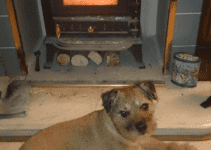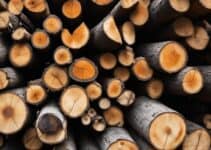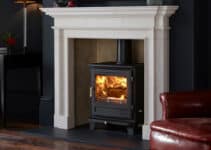As a keen advocate for sustainable heating, I find the process of fitting flue pipe to wood burning stove an integral skill for homeowners looking to install or maintain their wood burners. In this flue pipe installation guide, I’ll share insights and professional tips to ensure your wood burner flue pipe DIY installation is executed with precision and safety.
The commitment to doing it yourself doesn’t only empower you with control over your home heating system but also acquaints you with the intricacies of a properly maintained wood burner. Acknowledging the correct orientation for the flue pipe is critical, as it involves the direction of waste gases and the containment of creosote. Let’s delve into the standards that must be upheld for a proper installation that ensures a warm, safe home.
Understanding the Basics of Flue Pipes and Wood Burners
When engaging in wood burner flue pipe installation, the core principles guide safety and performance. My expertise underscores the fact that for proper flue pipe fitting for wood burner, a clear understanding of the system’s configuration is fundamental. The path from the wood burner to the external vent is not just a tubing arrangement; it’s a carefully planned passage designed to optimise efficiency and ensure safety.
Adhering to best practices for connecting flue pipe to wood stove involves several critical factors. One of the most important is ensuring that the stovepipe slopes upward marginally towards the chimney. This slight inclination is instrumental in maintaining a robust draft, enabling smoke and gases to exit the wood burner without condensation related hitches. Equally, the installation of the pipe should be as straight as possible, featuring minimal bends to decrease resistance and facilitate the straightforward ascent of gases.
| Essential Consideration | Details |
|---|---|
| Stovepipe Slope | Maintain a slight upward trajectory towards the chimney to assist draft and reduce condensation. |
| Installation Straightness | Limit bends to curtail resistance and support gas flow. |
| Pipe Diameter | Must coincide with the stove’s outlet specifications to eliminate creosote accumulation risk. |
| Material Certification | Usage of UL or CSA certified materials for safety compliance and functionality. |
| Annual Inspection | Inspection and cleaning by a qualified professional are crucial for the longevity and safety of the flue system. |
I underline the significance of matching the diameter of the stovepipe with the wood burner’s outlet guidelines. Any mismatch might induce creosote build-up, which not only hampers efficiency but also poses a serious safety threat. Moreover, it’s vital to use certified materials in the construction of flue pipes. High-grade materials certified by Underwriters Laboratories (UL) or the Canadian Standards Association (CSA) meet rigorous safety standards, making them the prudent choice for both builders and homeowners.
Lastly, I reiterate the importance of routine maintenance. Engaging a professional for an annual inspection and cleaning of the wood burner’s flue system is as crucial as the initial installation. This practice not only prolongs the life of your flue pipe but also mitigates potential fire hazards, ensuring that you can enjoy the warmth of your wood burner with peace of mind.
Preparing for Flue Pipe Installation
As we consider the critical steps for connecting a flue pipe to a wood burner, securing the flue pipe to a wood burning stove requires meticulous preparation. I’m about to share some essential tips for fitting a flue pipe to a wood burner that ensure a safe, efficient, and effective installation.
Measuring and Purchasing the Right Materials
My first step is to measure the chimney and stove outlet with precision. This ensures that I purchase a stovepipe with the correct diameter, aligning with my stove’s requirements. It’s paramount to choose between a single wall and a close clearance type, contingent upon my installation needs.
Gathering Necessary Tools
Once my measurements are in hand, I collect all the necessary tools for the job. A checklist I adhere to includes high-temperature silicone or furnace cement for a firm seal, sheet metal screws, and suitable brackets for secure attachment. These tools are instrumental in achieving a permanent and safe fitting of the flue pipe.
Ensuring Safety Before Starting
Before I embark on the actual fitting process, safety is my utmost priority. Consulting with a hearth professional or building officials grants me assurance that I comply with all national and local installation requirements. Additionally, relying on the stove manufacturer’s manual as a supplementary guide proves invaluable to the process.
Adhering to these steps establishes a solid foundation for a secure and compliant flue pipe installation. Now, with the right materials at hand, tools ready, and safety checks complete, securing the flue pipe to the warmth-emitting heart of the home can commence with confidence.
The Importance of Proper Flue Pipe Orientation
As an ardent advocate for fire safety and stove efficiency, I must emphasise the critical significance of proper flue pipe orientation. Understanding the direction of the stovepipe is not merely a matter of routine installation but a fundamental aspect that dictates both the performance of your wood burner and the safety of your home.
Understanding the Direction of the Flue
The direction in which your stovepipe is fitted can have considerable implications. When I install a flue pipe on a wood burner, I ensure the male end is always oriented downwards, pointing back to the stove. This non-intuitive approach is crucial for a reason: it is the safeguard against creosote leakage. Creosote, as we know, is highly flammable, and its proper management is a cornerstone of efficient wood burner operation.
Grasping the Role of Creosote
The role of creosote in flue pipes cannot be underestimated. A by-product of wood combustion, creosote can solidify within the flue, creating the potential for dangerous blockages and even chimney fires if not routinely managed. To mitigate these risks, I adhere to a rigorous process, ensuring that the flue pipe not only slopes upwards towards the chimney to enhance draft but also reduces the propensity for creosote build-up. It’s a balance of science and practical know-how, culminating in a flue pipe system that champions both safety and efficiency.
Moreover, I recognise that a properly aligned flue and chimney system works in synergy to maintain an optimal draft. Thus, it also impedes the formation of condensate within the pipe, which is fundamental in minimising corrosion and prolonging the lifespan of the flue.
In my professional practice, comprehensive understanding and meticulous application of these principles are not just recommendations; they’re imperatives. Through considered orientation and mindful installation of flue pipes, we can significantly enhance the enjoyment and safety of our wood-burning stoves.
Step-by-Step Guide: How to Fit Flue Pipe to Wood Burner
Embarking upon a DIY installation of a flue pipe to your wood burning stove can seem like a daunting task, but with careful attention to detail and a methodical approach, it’s certainly within the realms of possibility for those keen on home improvement. My instruction will take you through the necessary steps to achieve a secure and efficient connection, adhering strictly to safety protocols and best practices. By following this guidance, you’ll be well on your way to ensuring that your wood burner operates at peak efficiency, with a well-fitted flue pipe that stands the test of time.
Connecting the Male End of Flue Pipe
The initial step in the step-by-step flue pipe to the wood burner installation involves interfacing the male end of your stove pipe with the collar of your stove. It’s crucial for this end to point downwards, entering snugly into the stove’s outlet. The aim here is a tight connection to prevent any creosote or smoke from escaping. As I secure the flue pipe, my focus is on ensuring that all joins are sealed faultlessly — a strategy that’s served me well in maintaining a pristine and efficient system.
Ensuring a Secure Attachment to the Collar
Upon fitting the stove pipe, it’s imperative to make the attachment to the stove’s collar as secure as possible. I prefer using high-temperature silicone or furnace cement to seal this juncture, coupled with sturdy brackets or supports to reinforce the stability of the pipe. This not only prevents undesirable leakage but contributes significantly to the longevity of the flue system. Rigorous checks for firmness and potential weak spots are a part of my regular maintenance routine post-installation.
Checking the Slope for Adequate Draft
The final step involves checking the flue pipe slope, an aspect that cannot be overlooked. My goal is to ensure a minimum slope of 1/4 inch per foot, angling upwards toward the chimney. This guarantee’s an efficient expulsion of hot air and gases, driving the essential draft that a wood burner requires. Regular inspection and adjustments are part of my commitment to safety and performance, advocating for a thoroughly professional assessment at intervals to sustain the operational integrity of the flue pipe installation.



